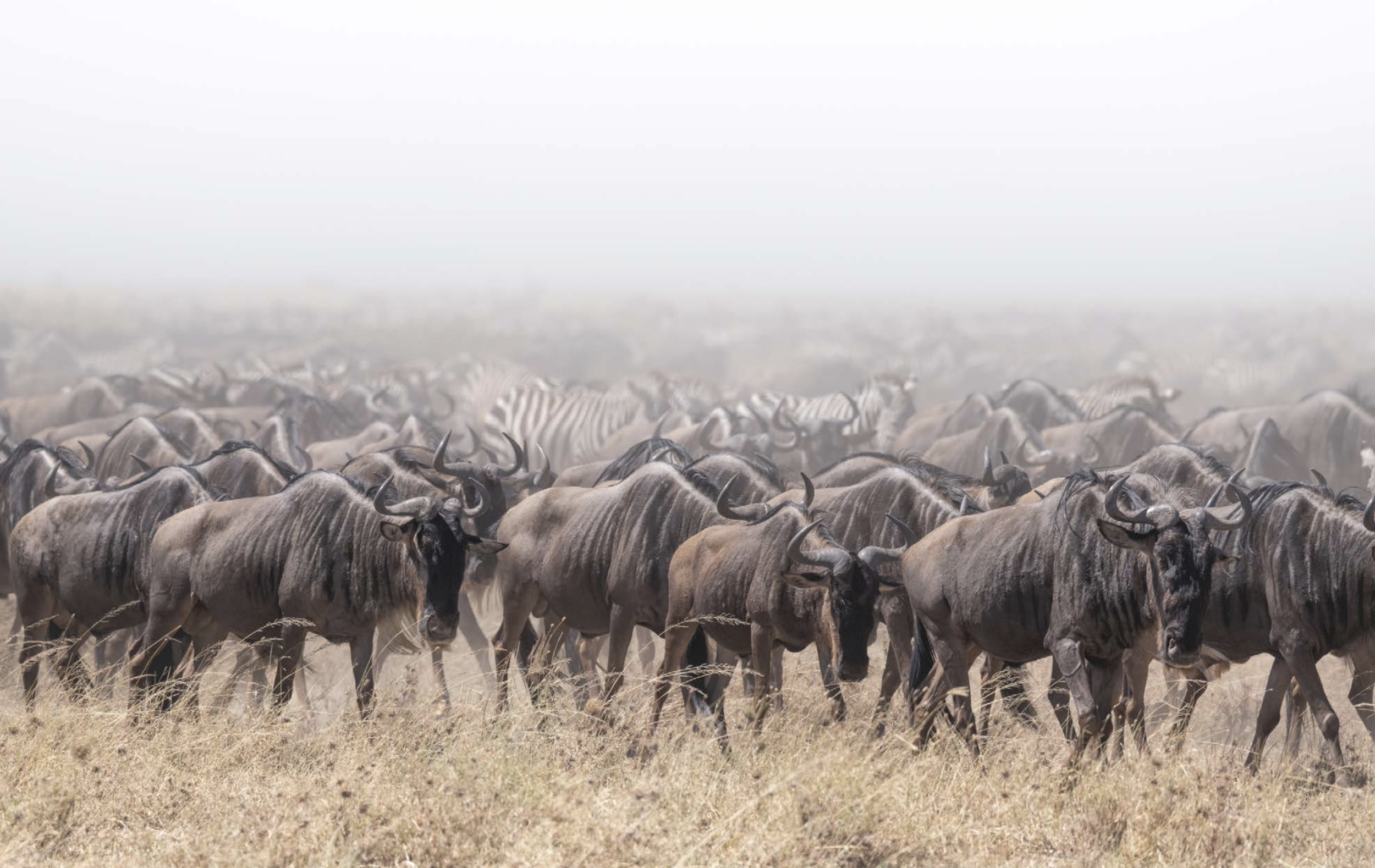Wildebeest Migration in East Africa
Wildebeest Migration in East Africa
There are few spectacles that rival the Great Wildebeest Migration in Tanzania and Kenya. Each year the migrating herbivores embark on a 1200 mile (2000 Kilometer) migration to seek out greener pastures and water sources during an oval migration through the Serengeti in Tanzania and the Masai Mara in Kenya.
This thundering, constant moving migration includes approximately 250,000 Zebras, 350,000 Gazelle, and 1.500,000 Wildebeest. And it's not just the migration itself that attracts photographers. It's often the predation that this traveling buffet offers the predators of East Africa! It is often the Lions, Cheetah, Leopards, and Hyena hunting that photographers want to capture.
While the migration can be accessed at any time of year, there are a few locations and time of year that you may want to consider going to see.
1 – The famous Mara River Crossing
This occurs when the herds are leaving Kenya. This huge photographic event can happen anywhere from late July to September, depending on the year. There are plenty of camps in this area to choose from. The name of the game in this location is patience. The crossing is never guaranteed. I always think if it as a bonus to see it happen.
2 – Movement across the Plains
Capturing the movement across the plains can happen at any time. You just need to identify where the herds are at the time of year you are planning on going. But to maximize your chances of seeing herds in the hundreds of thousands, it’s best to go between February and April, and then again from late June to late August.
3 – Calving Season in Tanzania
The calving season happens in the January to early March time frame. The herds begin the birthing season in the eastern and southern plains of the Serengeti in Tanzania right before the rainy season in that area.
This is the time of year for increased predation in a very photogenic part of the Serengeti. It is also a great time of year to capture very intimate moments between mothers and their babies.
A trip like this can run well over $10,000USD plus flights, and well, you may not want to travel to Africa. But maybe you still want to see a migration that mimics the Wildebeest Migration. Well, you’re in luck. There are two options for a similar type of migration here in North America.
1 – Bison in Yellowstone NP
There are two distinct times of year when you want to go photograph the thundering herds of Bison in Yellowknife. The autumn season, and the winter season. Two of the better locations to photograph the Bison herd is Lamar Valley, located in the northern region of the park and in and around many of the geothermal geyser basins. Photographing a large Bison head covered in frozen mist from a steaming geyser is unforgettable. Or a bunch of them approaching in a heavy snow. The size of the herds vary based on the year and what part of the park they converge in.
2 – Caribou Migrations in Canada
There are quite a few Caribou migrations that you can access in Canada. One is the Porcupine herd that migrates in the Yukon and Alaska. The second is the Qamanirjuaq which migrates in the southwest barrenlands of Nunavut. There are the herds in Northern Quebec that can be tracked between James Bay and the Hudson Strait, and finally, there are smaller herds in Northern Alberta and British Columbia.
While there are spectacular opportunities in the winter, the logistics of such a trip make it almost as adventurous as a trip to Africa. A more reasonable, and definitely a very photogenic time to visit these migratory herds is in the autumn season between late August and early October.
There are many guides and lodge-based options for such a trip. A quick Google search, and some networking with those that have already taken the trip will start you down the path of identifying the trio for you.
Along with the Caribou, the secondary species that you will be on the lookout for are the wolf packs that follow the herds, Musk Oxen, Arctic Fox and Red Fox, Coyotes, Wolverines, and a variety of bird life that will be migrating south at this time of year.

